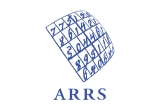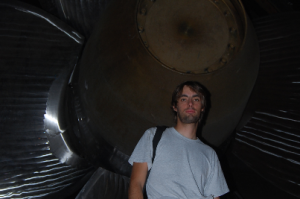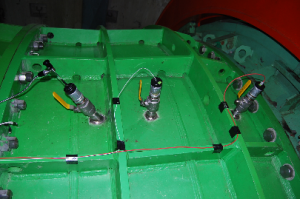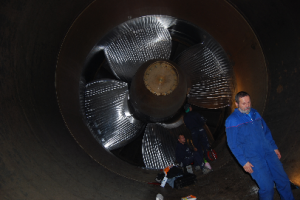 Largest remaining hydro potential in Europe lies in low head < 15m plants. However, very low head hydro power plants exhibit unsteady characteristics due to variation of static pressure load to the blades. Among them the most important is cavitation, which causes drop in efficiency, vibration, noise and erosion. To avoid the mentioned problems the minimal submergence of the impeller is given by standard (IEC 60193). This approach is not suitable for turbines with horizontal shaft and low river head. Consequently asymmetric pressure field develops at turbine intake. The blades travel from lower to higher pressure region and back. Determination of optimal operating point of a turbine with horizontal shaft significantly contributes to more efficient use of energy sources. Low head turbines with horizontal shaft enable harvesting energy from rivers with low drop. Additionally no dam needs to be constructed what significantly decreases the impact on the environment and reduces construction costs, which contribute about 2/3 of the whole investment.
Largest remaining hydro potential in Europe lies in low head < 15m plants. However, very low head hydro power plants exhibit unsteady characteristics due to variation of static pressure load to the blades. Among them the most important is cavitation, which causes drop in efficiency, vibration, noise and erosion. To avoid the mentioned problems the minimal submergence of the impeller is given by standard (IEC 60193). This approach is not suitable for turbines with horizontal shaft and low river head. Consequently asymmetric pressure field develops at turbine intake. The blades travel from lower to higher pressure region and back. Determination of optimal operating point of a turbine with horizontal shaft significantly contributes to more efficient use of energy sources. Low head turbines with horizontal shaft enable harvesting energy from rivers with low drop. Additionally no dam needs to be constructed what significantly decreases the impact on the environment and reduces construction costs, which contribute about 2/3 of the whole investment.
We intend to design a turbine, which will operate closer to the cavitation condition with minimal negative effects. We will study asymmetrically designed guide vanes, which will enable optimal distribution of pressure and at the runner intake and consequently reduce negative cavitation effects. The influence of the varying static pressure at turbine rotation will be investigated on a profile in cavitation tunnel where the system pressure will be changed periodically. This way the influence of varying pressure on the dynamics of cavitation and on the aggressiveness of cavitation erosion will be determined.
Recent activity:
 |
 |
 |
| Field measurements of acoustic emission, pressure pulsations and endoscopic visualization of cavitation in 43.5 MW pipe turbine Dubrava (Croatia). | ||
Partners: Litostroj Power d.d., Ljubljana, Slovenia
Duration: 2010 – 2013